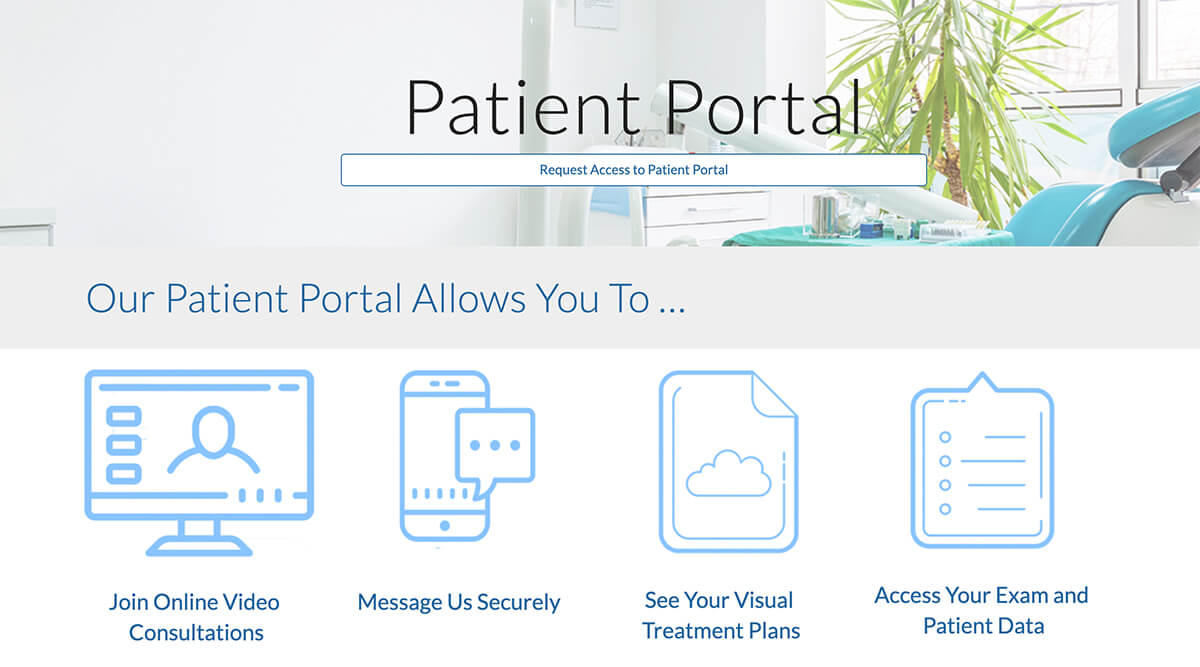
The word “teledentistry” might not be the first word that pops into a patient’s mind. While dental professionals have coalesced around the word “teledentistry” to describe dental telehealth modalities, it’s probably not what patients are going to google first.
Our research suggests patients are more likely to use terms like “telehealth”, “online” and “virtual” in combination with dental terms: dentist(s), dental care, dental.
If they are your patient though the far more likely first step is for them to visit your website or call you to find out how they connect to your practice now with questions and urgent concerns.
What specifically do patients want from a dental telehealth or teledentistry platform? Once they’ve reached out to you, what are they expecting? What must a teledentistry platform deliver in order for you to meet patients’ needs?
“Do you offer teledentistry?”
If existing or new patients have difficulty discovering you offer teledentistry services that make you and your team accessible now, they can’t take the next step. Make it clear in all your patient communication channels: your website, your outgoing phone message, via email campaigns, Facebook page, etc.
“What do I do to start?”
If you’ve answered the question on your website and other communication channels about offering teledentistry, next they need to know how to start, what to do next. This can be as simple as a form they fill out on your website, or you can book them over the phone if they are calling. Provide a link wherever you can to the specific starting point. Rather than a general link to your website, link to the form or make it really clear what they need to do next. That include “call us at our office number and we can schedule you right away.”
“Can I schedule an online virtual consultation?”
Patients across the board are not only getting used to the idea of telehealth but expecting it as an option. Now more than ever. That may mean in their mind a live video consultation where they can see and talk with a professional face to face. Here’s a comprehensive guide from Dr. Scott Howell on how to prepare you space and the patient for a synchronous live video teledentistry consultation. And a checklist of assessment questions.
“Can I message you with concerns and perhaps an image? Can I do it from my phone?”
This “asynchronous” mode of teledentistry is preferred by some patients, and certainly can be more efficient for some dental professionals. If the patient has sent diagnostically useful images and a good decription of their complaint, you may have the evaluation already completed by the time of the video consult or can skip that step entirely.
- Here’s guidance on how to help patients take better images to send in and how to help them prepare for a virtual consult with you.
- An overview of synchronous vs asychronous modes of teledentistry and sample billing scenarios.
“How to I access my patient and exam data after the video consult?”
If your teledentistry platform enables a patient portal with clinical data sharing, then you have an easy answer. In TeleDent the way that works is that patients follow a link in their portal registration email to initially setup their access. From then on it’s like logging into any website. The TeleDent patient portal is where video meetings, patient messaging and file sharing all takes place.
“Will I have treatment plans I can look at and understand at home and share with a partner to discuss?”
Patients won’t know yet to be asking this! You can surpass their expectations and establish yourself as the dentist they refer to friends and family by giving them visual treatment plans they can look at on any device wherever they are. This is one of the key ways to make use of a patient portal for improving the healthcare journey and your practice’s digital presence.
